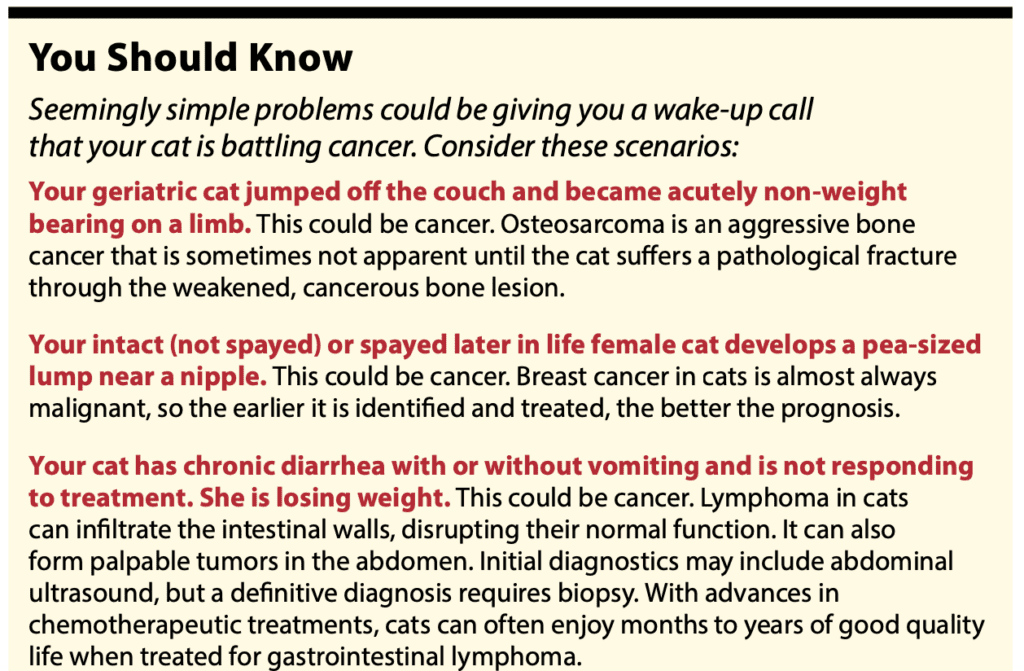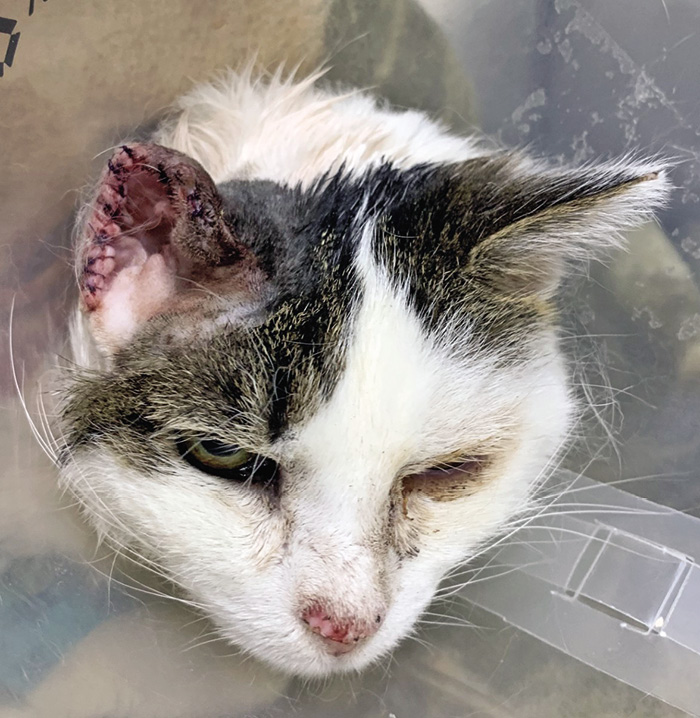Not every lump on your cat’s body is cancer, but that doesn’t mean you should ignore new growths. A rapidly growing spot on your cat should raise concern, but the diagnosis may bring questions as to what is best for your feline friend. The only way to know what lies ahead is to have your veterinarian examine the cat and advise you.
Cutaneous Mast Cell Tumors
If your cat develops one or more small (less than 8 millimeters, or about a third of an inch), raised, round, smooth, hairless skin bumps that are pink, gray, or white in color, they could be cutaneous mast cell tumors.
Cutaneous mast cell tumors occur most often in cats 9 years old or older, and these tumors usually develop around the head and neck. The nice thing about these tumors in cats is that they are usually benign.
The treatment of choice for cutaneous mast cell tumors in cats is surgical removal, which should be curative. The question is whether this is the best choice for your cat.
Removal is the gold standard of care, but considerations for individual cats include the cat’s overall health (is he a good candidate for general anesthesia and surgery?), the cost of the procedure, and its possible effect on your cat’s overall health. None of these considerations are small concerns.
“Sometimes I think it’s OK to sit tight on small, cutaneous mast cell tumors if they are quiet and not bothering the cat,” says Dr. Suzanne Losito, Cornell Veterinary Class of 1988 and a veterinarian at Fairmount Animal Hospital in Syracuse, NY.
“This is especially the case if the patient has health issues making anesthesia more of a risk. Because these tumors are usually benign, sometimes the procedure involved in removing them creates more risk to the patient than leaving them,” says Dr. Losito. If you choose to wait, continued monitoring is usually advised.
Two other forms of mast cell cancer in cats are more worrisome than the cutaneous form. When mast cell tumors occur in the spleen or the gastrointestinal tract, they are almost always malignant. Sadly, affected cats are usually sick by the time this cancer is diagnosed by a veterinarian.
Your veterinarian may be able to palpate an enlarged spleen or intestinal tumors in the abdomen. Splenectomy is the treatment of choice for splenic mast cell cancer, and survival times are decent. Gastrointestinal mast cell tumors carry a worse prognosis, even with surgery and chemotherapy, if indicated.
Squamous Cell Carcinoma
If your cat develops chronic scabby, crusted lesions on its ear tips, lips, nose, or eyelids, it could be cancer. Cutaneous squamous cell carcinoma (SCC) is a malignancy that mostly affects white or lightly pigmented cats who go outdoors in the sun.
The upside to this cancer is that it is slow to metastasize (spread), so if it is caught early enough in a place where it can be removed with wide margins, surgery can be curative. Not surprisingly, when SCC occurs in the mouth of cats, it is difficult to treat, and the prognosis is usually worse.
Signs of oral SCC include bad breath, drooling, pawing at the mouth, changes in eating habits, and weight loss.

Injection Site Sarcoma
A cat who develops a firm bump in the area where an injection was given that doesn’t resolve within three weeks could be cancer.
Injection site sarcoma (ISS) is a rare but devastating adverse event that can occur after a subcutaneous injection in cats. When ISS was first identified in 1991, it was strongly associated with the rabies vaccine and the feline leukemia vaccine, specifically the aluminum adjuvant (a substance added to vaccines to enhance their effectiveness) in these vaccines. Subsequently, the role of adjuvants in the development of ISS has been brought into question, and this remains a controversial issue. Importantly, ISS has been occasionally associated with non-vaccine injections in cats, especially of long-acting medications, including antibiotic and steroid injections.
ISSs are usually fibrosarcomas, which are locally aggressive cancers that are slower to metastasize, although up to 25% do spread. They often occur within weeks or months of the injection, although they have been known to occur up to 10 years later.
Sometimes these lesions grow and change rapidly, making it clear something is wrong with the cat. Other times it is slow, more insidious growth of a firm, fixed, bumpy mass.
Because the biological behavior of this cancer is so well known, there is no sense in procrastinating when pursuing treatment, nor is there sense in pursuing any kind of minimal approach to removing the lump.
Early, wide surgical resection on the first attempt yields the best results. This means if it occurs on a limb, as aggressive as it may sound to you, limb amputation may be recommended to save your cat’s life. Fortunately, most cats do surprisingly well after recovery from limb amputation.
This is the rationale behind the current recommendation to administer vaccines on the lower limbs rather than between the shoulder blades, as had been standard practice for decades. Additional therapy, including radiation and chemo, may be recommended by your veterinarian on a case-by-case basis.




